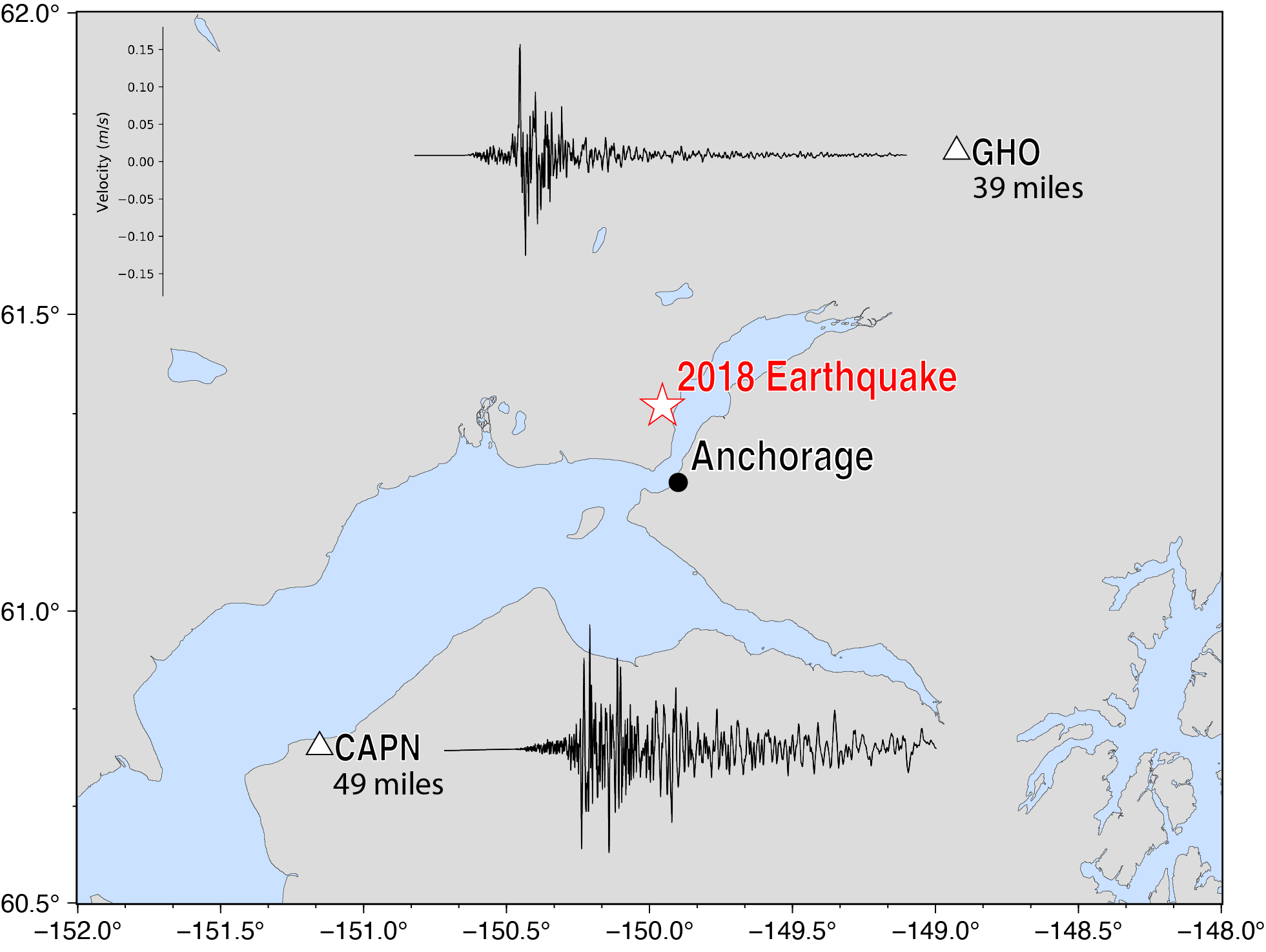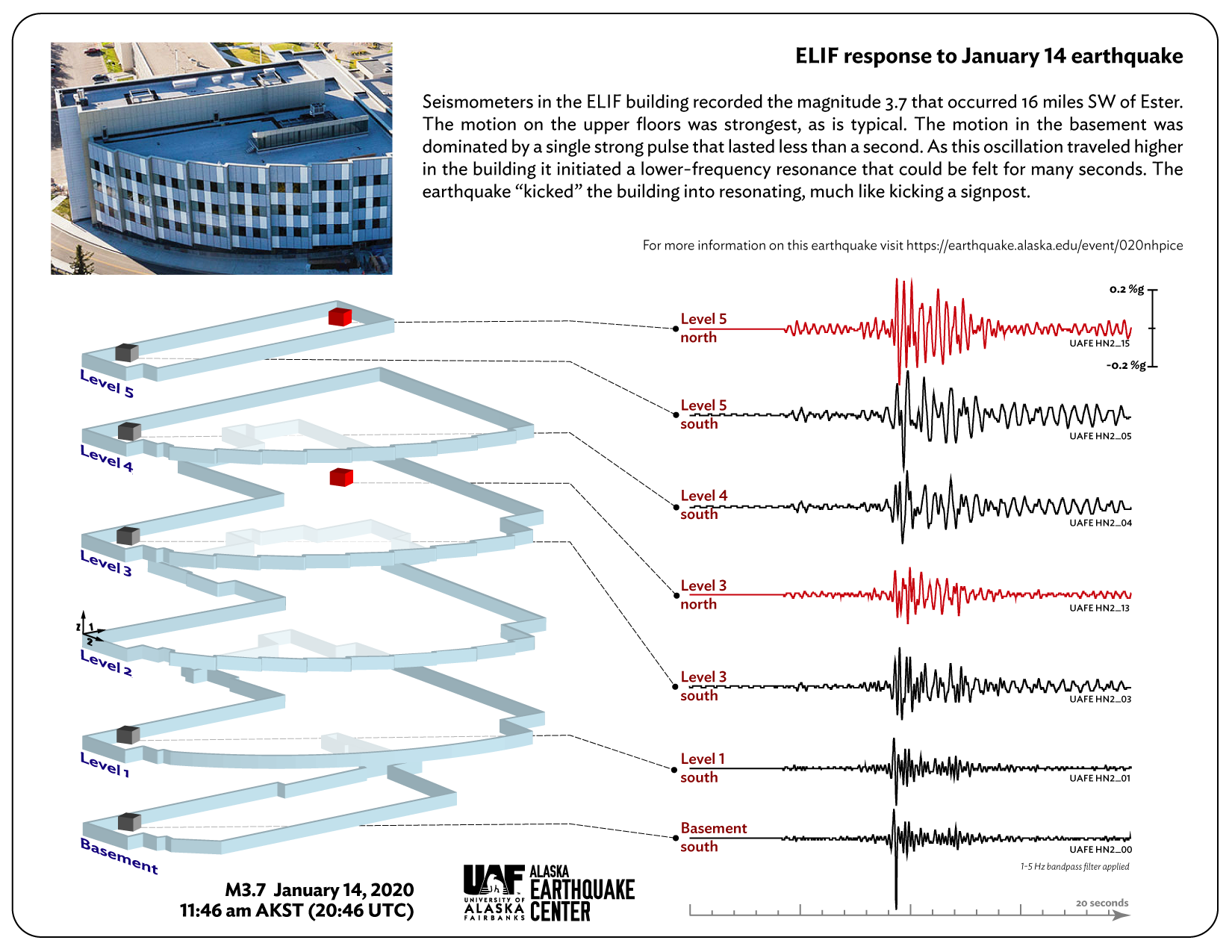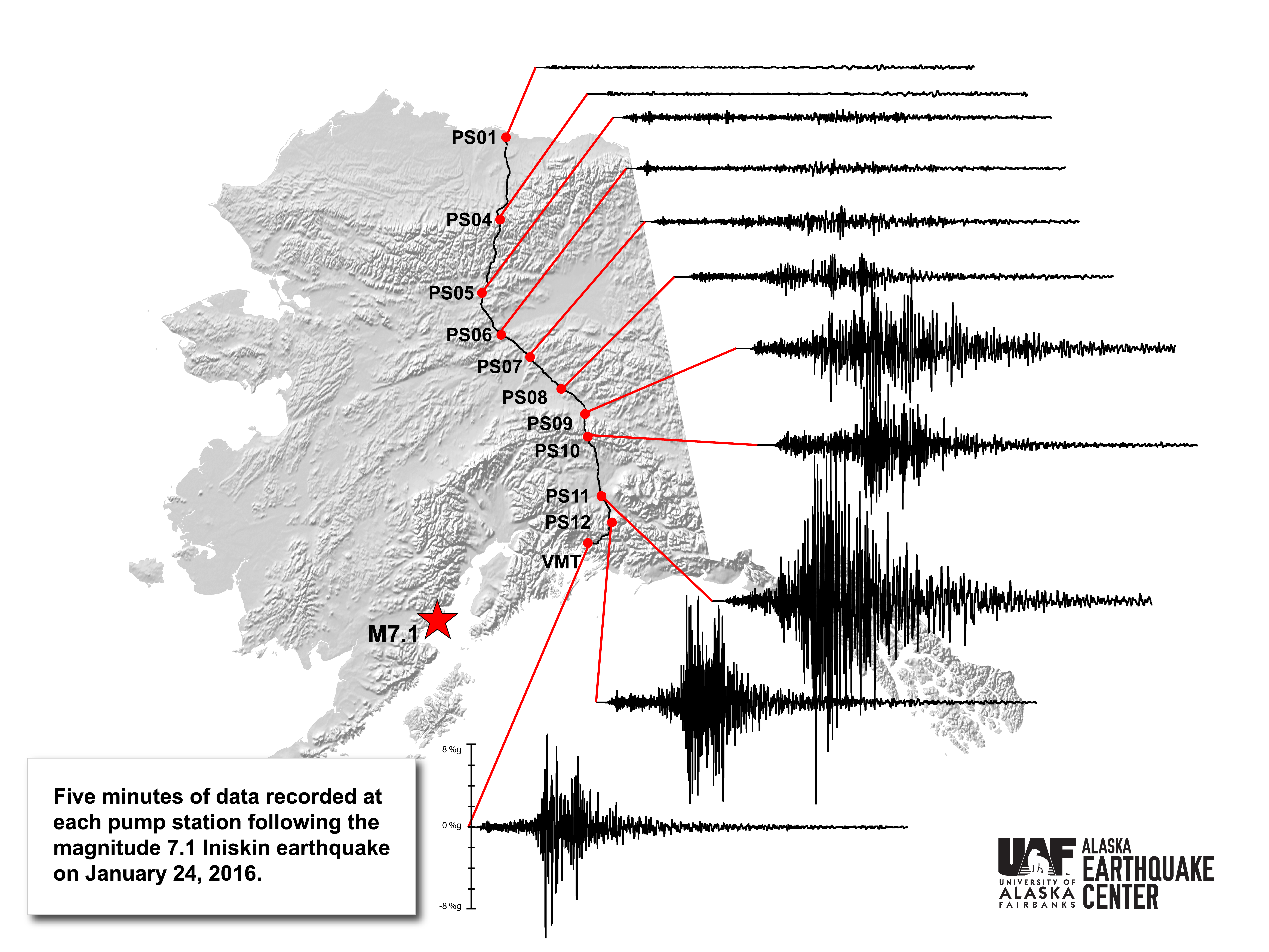


Someone recently asked, “Why doesn’t the Alaska Earthquake Center report how long an earthquake lasts?” We could ask in reply, “Do you mean the earthquake itself or the shaking you feel under your feet?” Let’s dive into the process of an earthquake and look at some seismograms to fully answer this deceptively simple question.
When an earthquake hits, the fault rupture is not instantaneous—it may take anywhere from a fraction of a second to minutes for the patch of ground to break, depending on the size of the earthquake. For example, the energy release of a magnitude 4 or 5 earthquake takes about one second. For very large earthquakes, the energy release lasts much longer. During the 1964 M9.2 Great Alaska Earthquake, it took nearly five minutes to rupture a 500-mile-long (800 km) fault.
After the ground ruptures in an earthquake, energy spreads out in all directions as seismic waves. What we feel as shaking is the reverberation of all the energy released. If the earth was made of uniform material, seismic waves would move through quickly. Instead, they bounce off different geological features and layers of the earth, which changes how they move and how much ground shaking they cause.
How long the ground shaking lasts may depend on how close you are to the earthquake location, what type of soil and rock lie under you (Figure 1), or even what floor of a building (Figure 2) you’re standing on (the higher the floor, the longer the swaying lasts).
This effect is more pronounced at distance. Think of it like watching fireworks from very far away. The initial colors burst forth in a fraction of a second, but the colors may twinkle a few moments longer, and the rumble of sound may take a few more seconds to reach you. How long did the fireworks last? Did they end when the last twinkle faded? When the sound reached you? The moment the sound faded away? It’s not a clear-cut timeframe, and varies depending on the observer’s location and perception.
Earthquakes are similar to fireworks: they also create multiple types of energy waves. The first seismic energy to reach you from an earthquake is the pressure, or P, wave, followed by the slower secondary, or S, wave. The slowest waves are surface waves, which have such long wavelengths (the distance between wave peaks) that they generally aren’t felt by people. Surface waves may cause tall buildings to sway, but not shake. The farther you are from the source, the longer the time lag is between the first P wave’s arrival and the first S wave’s arrival (Figure 3). S waves generally produce stronger shaking than P waves, so for smaller earthquakes, you may not even feel the P wave, only the S wave. The S-wave duration depends both on the size of an earthquake and the distance you are from the earthquake’s source. All of these factors change how long the earthquake shaking feels.
Seismic waves travel slower through looser, less consolidated material, so the shaking lasts longer than in places with more rigid material. Sandy or other loose soils, or soils saturated with water, may also shift or jiggle like jello after the waves pass through, prolonging and sometimes intensifying the shaking.
This simulation of an earthquake in Cook Inlet Basin, which is filled with mud and loose sedimentary soils, shows how seismic waves move slower and become “trapped,” bouncing around the basin. Ground movement here lasts longer and is stronger than other areas with denser soils or rock. Video courtesy of Carl Tape.
Earthquake energy trails off after the initial burst of seismic waves. But where does the waveform end? Shaking that is strong enough to feel will always end before the seismic waves themselves do. At what point does the waveform return to background levels of “earth hum” (normal seismic activity not usually strong enough to feel)?
It is possible to determine when a seismic wave ends by comparing it to the signal level before the seismic energy from the earthquake arrived. This may be difficult for a human to do, but computers can detect it easily with some signal processing. The timeframe for the return to background levels varies widely. For large earthquakes, the seismic energy may travel around the globe multiple times for several days before truly returning to normal background levels. For a moderate earthquake, the seismic energy may subside in just minutes.
So the question of how long an earthquake lasts highlights the fascinating ways seismic waves interact with the earth. Each station in our network, and each person who responds with a Did You Feel It report, helps track the variety of motions from just one earthquake. That variety is one of the reasons why a widespread network of seismic stations across the state is such an important tool for understanding the earth movement under our feet.


